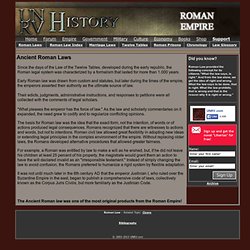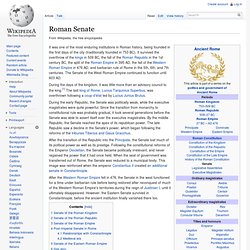

Ancient Rome. In its approximately 12 centuries of existence, Roman civilization shifted from a monarchy to a classical republic and then to an increasingly autocratic empire.

Through conquest and assimilation, it came to dominate Southern and Western Europe, Asia Minor, North Africa, and parts of Northern and Eastern Europe. Rome was preponderant throughout the Mediterranean region and was one of the most powerful entities of the ancient world. Rome. Carthage.
Roman law. Ancient Roman Laws. Since the days of the Law of the Twelve Tables, developed during the early republic, the Roman legal system was characterized by a formalism that lasted for more than 1.000 years.

Early Roman law was drawn from custom and statutes, but later during the times of the empire, the emperors asserted their authority as the ultimate source of law. Their edicts, judgments, administrative instructions, and responses to petitions were all collected with the comments of legal scholars. "What pleases the emperor has the force of law. " The Forum Romanum. Republic vs. Democracy. Roman Senate. It was one of the most enduring institutions in Roman history, being founded in the first days of the city (traditionally founded in 753 BC).

It survived the overthrow of the kings in 509 BC, the fall of the Roman Republic in the 1st century BC, the split of the Roman Empire in 395 AD, the fall of the Western Roman Empire in 476 AD, and barbarian rule of Rome in the 5th, 6th, and 7th centuries. The Senate of the West Roman Empire continued to function until 603 AD. The Roman Senate.